Exploring Victoria Falls from both Zambia and Zimbabwe on The South of Africa Tour where I visit 13 new countries.
From which country should you visit Victoria Falls? Zimbabwe, Zambia, or both?
I had this common question and found no clear answer, so I decided to visit the falls from both countries.
Victoria Falls was named after Queen Victoria by the explorer, David Livingstone. He discovered the falls in 1855, though the indigenous people had already seen and named the natural phenomenon, Mosi-oa-Tunya meaning “the smoke that thunders”. The mist rising into the sky looks similar to smoke and water crashing into the gorge creates the thunder.
1,708 metres (5,604 ft) wide and 108 metres (354 ft) high, Victoria Falls is the largest waterfall in the world in terms of the mass of falling water and is recognized as a World Heritage Site.
Sitting on the border between Zambia and Zimbabwe, the falls can be easily visited from either side or both.
On the Zambian side, tourist are based out of Livingstone, a town that is rapidly developing with luxury hotels. On the Zimbabwean side tourists visit from the town named Victoria Falls. The infrastructure has been better developed on the Zimbabwean side and historically has been more popular, though with the recent political tensions brought in by president Mugabe, tourist numbers have been waning.
Victoria Falls from Zambia
From Livingstone I went to the falls on a tour provided by The River Club. At the entrance I paid the park fee and exited the vehicle next to a strip of souvenir shops selling everything from ponchos and umbrellas to arts and crafts. I wrapped my camera in a plastic bag and put on the white poncho my guide handed me.
We went through the park and near the entrance found a statue of Livingstone, a WWI memorial, and a falls model showing about half of the falls on Zambia’s side.
Further down the path, the loud display of water was revealed beyond the trees. Mist and wind soaked everything, making it difficult to take pictures even though the guide was holding an umbrella over me.
We walked from viewpoint to viewpoint photographing along the way. Eventually we arrived at a single-file metallic bridge that happened to be very slippery. If you are afraid of heights, don’t look down.
On the other side of the bridge, the path continues along the falls and wraps around the gorge for a glimpse of Victoria Bridge. Before the path makes a U-turn, you can see the Zimbabwean side across the gorge.
The returning path segment was quite overgrown with vegetation and not well maintained. Following the edge of the gorge, the route returns via the metal bridge and back to the parking lot.
From the park, the guide drove me to the Zambia immigration office where I received my exit stamp. There I met Kenny, the guide that would take me to the Zimbabwean side. I thanked my guide and transferred to the taxi we were leaving in. Kenny organized a cab because his vehicle was not permitted to cross the bridge.
Victoria Falls Bridge
Built in 1905, the steel bridge was constructed in England and shipped over through Mozambique. Interesting to note, the bridge was officially opened by George Darwin, the son of Charles Darwin.
Conceived to be part of a rail link from Cairo to the Cape, which was never completed, the bridge now carries rail, car, and foot traffic.
We got out of the car so I could walk along the bridge and explore. Right in the center is a bungee jumping activity. This company is infamous for a viral video of an Australian girl jumping and then her bungee cord snapping, sending her plummeting into the crocodile-infested waters below. She fortunately survived.
I watched a tourist jump and was told that I too can take the plunge for $160 a pop!
Walking across the bridge we arrived at the Zimbabwean border control where I stood in line next to a baboon to get my entry stamp. I did not need another visa as I had the Kanza visa.
Victoria Falls from Zimbabwe
Right across the bridge is a parking lot with souvenir kiosks facing the entrance of the Victoria Falls park. Kenny parked here and I walked across the street to enter the park.
After paying the entrance fee, I glanced at their map of the falls which highlights the Zimbabwean section and portrays the Zambian side as a small section in corner of the falls.
After passing through a shop and cafe area, the path leads to a statue of Livingstone and a canoe. The paths were well manicured and quite wide. The gardens around the path were well maintained.
The path is mostly open with railings and fencing on the side along the river. Once you are facing the falls, you can walk right up to the edge where slippery rocks await. I walked to the end of the path and went right to the lip of the cliff looking straight down the crevice. Plenty of tourists took dramatic selfies here and I was no exception.
Thoroughly soaked, I returned along the path to the exit and rejoined my guide to continue my tour of Zimbabwe.
Comparing Victoria Falls from Zambia and Zimbabwe
Here’s my brief comparison of the falls from both sides.
Accessibility: Both sides are located near their respective airports and can be easily reached by town. Within the parks, the paths on the Zimbabwean side are much easier to navigate and well designed, while the Zambian side was easy to navigate, the paths could have been better maintained. The metal bridge was adventurous to walk across, but not for the faint of heart.
Views of Falls: The majority of land facing the falls is located on the Zimbabwean side with about a third located on the Zambian side. Views however are comparable as the mass of water falling and the size of the gorge can be experienced from both sides.
Interesting to note that in the future the crack creating the new gorge will be mostly on the Zambian side, but this will take many years.
Cost: Zambia is $20. Zimbabwe is $30.
Shopping: Both sides have markets though they are mostly tourist souvenirs and some crafts. The Zambian side seemed to have more to offer, though the market was technically within the park. The main Zimbabwean market is outside the park and inside there is a small shop.
Facilities: The Zimbabwean side has better facilities in terms of a cafe, bathrooms, and a visitor center, while the Zambian side is quite basic.
Other Sights: Both sides have a statue of Livingstone, though the Zimbabwean side statue seems better for photo-ops. Only the Zambian side has a WWI monument, though it’s not too impressive. The view of Victoria Falls Bridge is better from the Zambian side, but you can get a similar view from the Victoria Falls Hotel on the Zimbabwean side.
Overall: Both sides have their advantages and disadvantages. As an adventure seeker, I enjoyed the experience more from the Zimbabwean side simply because you could freely walk up to the edge of the gorge and do as you please. This however may not be ideal for groups with children. The bridge on the Zambian side was fun to cross as well. The Zimbabwean side also seem more developed and of international standards for a park.
You can see more of the falls from the Zimbabwean side, though this doesn’t add much to the grandeur of this wonder.
While the experiences are very similar, if I could only visit from one side, I would pick the Zimbabwean side. If time was not a concern, I would visit from both sides and walk across Victoria Bridge as well.
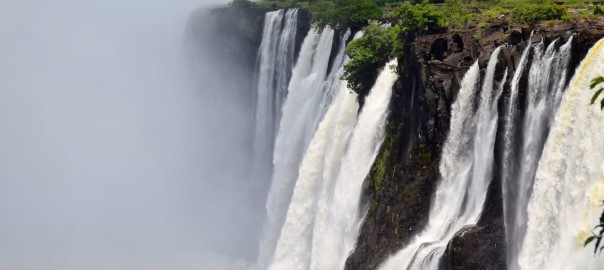
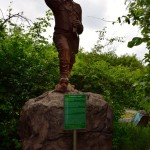
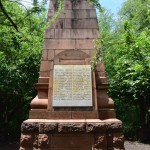
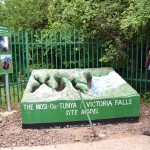
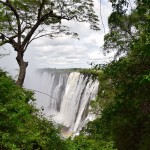
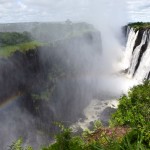
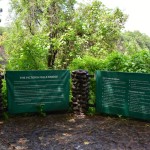
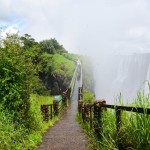
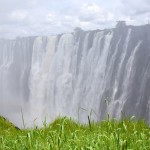
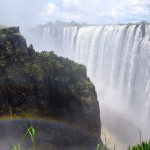
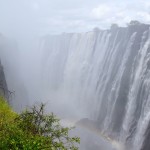
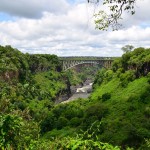
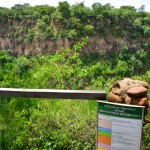
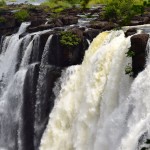
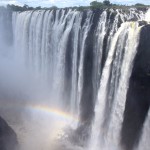
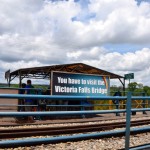
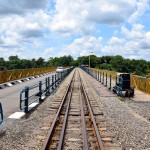
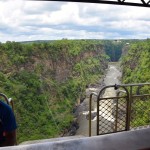
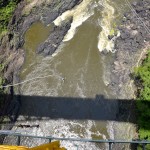
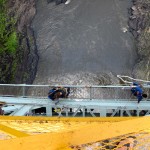
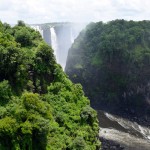
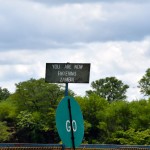
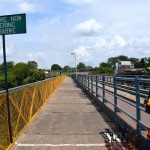

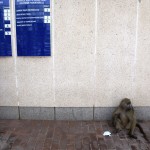
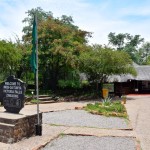
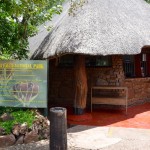
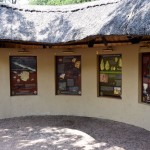
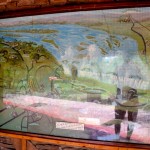
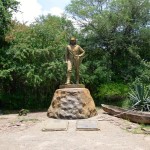
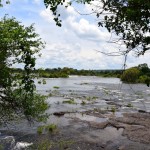
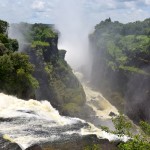
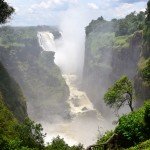
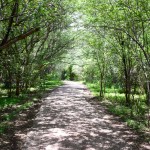
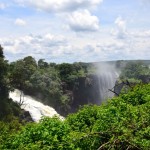
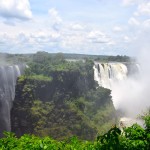
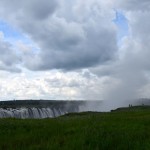
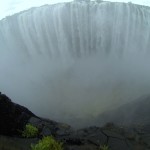
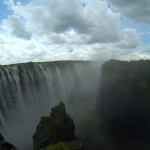
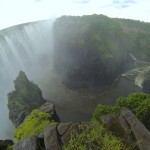
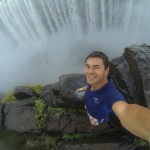
Pingback: Experience: The River Club, Zambia | World-Adventurer()
Pingback: Victoria Falls and Harare, Zimbabwe | World-Adventurer()